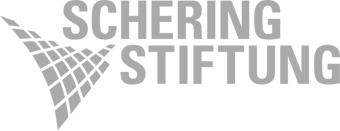
Lecture
Date:
September 10, 2019, 7–8:30 p.m.
The event will be in German.
There are no tickets left for this event (free of charge). However, it is still worthwhile to ask at the box office on the evening of the event. Unclaimed tickets are given to people from the waiting list approximately 15 minutes before the event starts.
“Seeing yourself see,“ is how James Turrell describes the experience of his Ganzfeld pieces. In the diffuse light field of his installation Ganzfeld “Aural,” which will be on display at the Jewish Museum Berlin until October 6, 2019, the boundaries of space disappear – its dimensions seem impossible to grasp and virtually endless. A sense of disorientation sets in and at the same time a peculiar floating feeling. A conversation evening co-organized by the Schering Stiftung and the Jewish Museum Berlin looks at the Ganzfeld effect from two different perspectives.
In the 1960s, James Turrell was one of the first artists to stage the medium of light without a visible connection to its light source, turning immaterial light into both a material and an autonomous medium of design. Turrell’s works have their origin in the Art & Technology program of the University of California and the Los Angeles County Museum, where artists and scientists have studied the Ganzfeld in the context of further developing space travel.
The Ganzfeld effect was discovered as early as the 1930s in the field of perceptual psychology. Ganzfeld describes a completely homogeneous field filling one’e entire visual field. The observer experiences a feeling of disorientation, an altered perception of colors and brightness. Big snow fields, dense fog, or the darkness of night are natural Ganzfelder. Through his choice of light intensity and the positioning of light sources, Turrell provokes the Ganzfeld effect by removing any visual reference points for the observer’s perception of space. In his installation Ganzfeld “Aural,” intermittent strobe lights additionally confuse the senses.
As part of an interdisciplinary conversation evening co-organized by the Jewish Museum Berlin and the Schering Stiftung, Margarete Pratschke, Visiting Professor of Modern and Contemporary Art and Visual History at HU Berlin, will provide insight into the Art & Technology program and put Turrell’s works and light art into the scientific and historical context of their creation. Ernst Pöppel, former director of the Institute for Medical Psychology at LMU Munich, in his lecture “Ein Blick in die Augen und das Gehirn – beim Sehen” (Looking into the Eyes and the Brain – while Seeing) will explain the physiological and psychological foundations of perceptual effects.
Gregor H. Lersch, director of temporary exhibitions at the Jewish Museum Berlin, will moderate the evening and give an introduction to the installation Ganzfeld “Aural”.
The speakers
You might also be interested in
15th Berlin Foundation Week
"Building bridges" Building bridges and creating hope
Art Science Collaborations: Establishing a Research Agenda
Schering Foundation x ZKM | Karlsruhe
14th Berlin Foundation Week
"Everything okay?" Between permanent crisis and confidence
Hybrid Encounters
Art meets Science
Newsletter
Contact & social networks
Schering Stiftung
Unter den Linden 32-34
10117 Berlin
Telefon: +49.30.20 62 29 62
Email: info@scheringstiftung.de
Opening hours
Project space
Thursday to Monday: 1 pm - 7 pm
Saturday to Sunday: 11 am - 7 pm
free entrance

